Ricoh Caplio R3 Review
Review Date: December 13th 2005
|
Image Quality
All of the sample images in this Review were taken using the 5M Fine mode, which gives an average image size of around 2Mb.
Noise
There are 5 ISO settings available on the Ricoh Caplio R3 which you can select at any time if the camera is in any of the manual exposure modes. Here are some 100% crops which show the noise levels for each ISO setting:
ISO 64 (100% crop) |
ISO 100 (100% crop) |
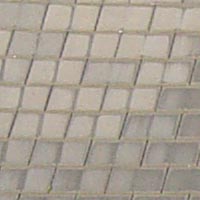 |
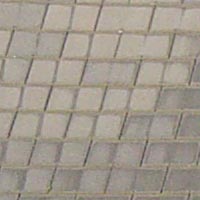 |
ISO 200 (100% crop) |
ISO 400 (100% crop) |
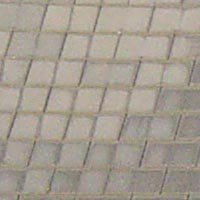 |
 |
ISO 800 (100% crop) |
|
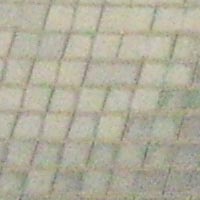 |
|
The Ricoh Caplio R3 is one of the noisiest cameras that I've reviewed. There is no discernible noise at the slowest settings of ISO 64, as you would expect, but it's already starting to appear at the very slow speed of ISO 100, and is all too obvious from ISO 200 up to the unusable setting of ISO 800.
Sharpening
Here are two 100% crops which have been Saved as Web - Quality 50 in Photoshop. The right-hand image has had some sharpening applied in Photoshop. The out-of-the camera images are quite soft at the default sharpening setting of Normal and benefit from some further sharpening in a program like Adobe Photoshop. Alternatively you can increase the in-camera sharpening by choosing the Sharp option.
Original
100% Crop |
Sharpened 100% Crop |
 |
 |
 |
 |
File Quality
The Ricoh Caplio R3 has 2 different image quality settings available, Fine and Normal, with F2592 being the highest quality/largest image size option. Here are some 100% crops which show the quality of the various options, with the file size shown in brackets.
| Fine
2592 (1,976Kb) |
Normal
2592 (1,112Kb) |
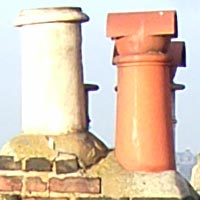 |
 |
Chromatic Aberrations
The Ricoh Caplio R3 suffered badly with chromatic aberrations during the review, with many images showing purple fringing present around the edges of objects in high-contrast situations, as shown in the examples below.
| Example
1 |
Example
2 |
 |
 |
| Example
1 |
Example
2 |
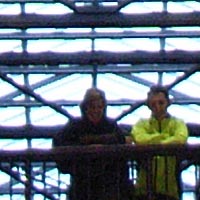 |
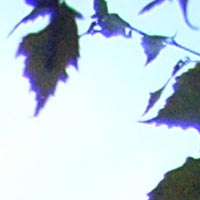 |
Macro
The Ricoh Caplio R3 offers a Macro setting that allows you to focus on a subject that is just 1cm away from the camera. The first image shows how close you can get to the subject (in this case a compact flash card). The second image is a 100% crop.
| Macro Shot (click to view full-sized image) |
100% Crop |
Flash
The flash settings on the Ricoh Caplio R3 are Auto, Red-eye Reduction, On, Slow Synchro and Off. These shots of a magnolia coloured wall were taken at a distance of 1.5m.
| Flash Off - Wide Angle (28mm) |
Auto Flash - Wide Angle (28mm) |
 |
 |
| Flash Off - Telephoto (200mm) |
Auto Flash - Telephoto (200mm) |
 |
 |
And here are some shots of yours truly. As you can see, both the Flash On setting and the Red-Eye Reduction option caused a tiny amount of red-eye (or to be more accurate, purple-eye).
| Flash On |
Flash On (100% Crop) |
 |
 |
| Flash - Red-Eye Reduction |
Flash - Red-Eye Reduction (100% Crop) |
 |
 |
Night Shot
The Ricoh Caplio R3 maximum shutter speed is 8 seconds, which is fairly good if you're seriously interested in night photography. The shot below was taken using a shutter speed of 8 seconds, aperture of f/4.8 at ISO 64. I've included a 100% crop of the image to show what the quality is like.
| Night Shot (click to view full-sized image) |
100% Crop |
 |
|
Anti Shake
The Ricoh Caplio R3 has an anti-shake mechanism, which allows you to take sharp photos at slower shutter speeds than other digital cameras. To test this, I took 2 handheld shots of the same subject with the lens set to a focal length of 200mm, with the ISO speed set to 64. The first shot was taken with anti shake turned off, the second with it turned on. Here is a 100% crop of the image to show the results.
| Shutter Speed | Anti Shake Off |
Anti Shake On |
| 1/90th | 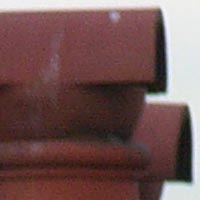 |
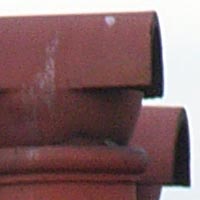 |
| 1/17th |  |
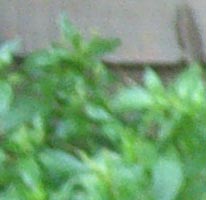 |
As you can see, with anti shake turned on, the images are much sharper than with anti shake turned off. This feature really does seem to make a difference and could mean capturing a successful, sharp shot or missing the opportunity altogether.
Overall Image Quality
The Ricoh Caplio R3's image quality can only be described as "poor". The Ricoh Caplio R3's main drawback in terms of image quality is noise. The 5 megapixel sensor used in the Ricoh Caplio R3 should have resulted in relatively noise-free images at the slower ISO settings, but even ISO 100 has some obvious noise, particularly in shadow area. The noise gets progressively worse as you go from ISO 200 to ISO 400 and finally the unusable ISO 800 setting. The 5 megapixel images were quite soft straight out of the camera at the default sharpen setting of Normal and either require some further sharpening in an application like Adobe Photoshop, or you should set the in-camera sharpening to Sharp. The Ricoh Caplio R3 did not handle chromatic aberrations very well at all, with obvious purple fringing effects appearing in high contrast situations. The night photograph was poor, with the maximum shutter speed of 8 seconds allowing you to capture just enough light for most situations, but the resulting images lacked detail and were blurry (perhaps an attempt to mask the noise). Macro performance is the stand-out highlight, allowing you to focus as close as 1cm away from the subject, although there is a lot of lens distortion and shadowing at such a close distance. Anti-shake is a feature that sets this camera apart from its competitors and one that works very well when hand-holding the camera in low-light conditions or when using the telephoto end of the zoom range. The built-in flash worked OK indoors, with little red-eye and good exposure. Overall, though, the Ricoh Caplio R3 is a camera to avoid if image quality is top of your list of must-have features.
|



